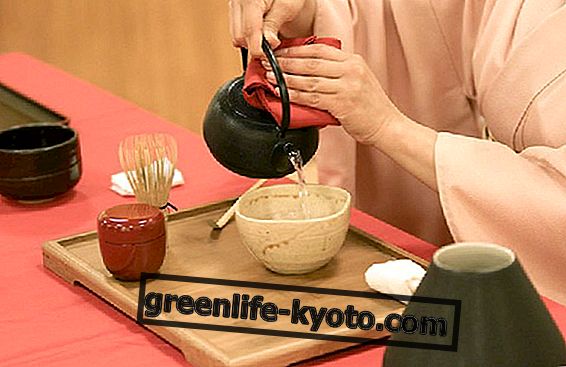
Oriental medicine
Oriental medicine is a complete expression of the spirit and culture that has developed over the centuries. Its fundamental principles are the same that inform the global vision of the world proper to the philosophy and religion of the place.
In reality, when we talk about oriental medicine, we make a great generalization . There are many different medical systems, traditional and otherwise, which fall into this category. Among the largest and most popular, there is certainly traditional Chinese medicine, Tibetan medicine and Ayurvedic medicine. China, Tibet and India.
Is it possible to find points in common between these that can characterize oriental medicine? Yes, especially if we are dealing with the West. Let's try to provide brief arguments.
In oriental medicine, there is the idea of a dynamic unity based on systematic correspondence : the universe is an articulated whole, in continuous metamorphosis, but the actors of this metamorphosis are always the same forces, the same elements in their reciprocal relationship.
Then we have the concept of energy which, although with different names, is responsible, in its flow, for the states of harmony or perturbation of the cosmos, of the body and of the mind.
Hence the characteristic conception of the state of illness, as a disturbance of an equilibrium.
Another fundamental concept is that of holism. Everything is functional, nothing excluded. Oriental medicine therefore investigates the causes and not the symptoms .
The major oriental medicines
Let's consider the three best known and widespread forms of expression of Oriental medicine also in the West: ayurvedic medicine, Tibetan medicine and traditional Chinese medicine.
Ayurvedic medicine. Ayurvedic medicine is a complex medical system that includes prevention and treatment aspects aimed at lengthening and improving the life of the human being in harmony with nature. "Knowing life" ( ayurveda ) means understanding that man, consisting of body and mind, senses and soul, being an integral part of nature like all living forms, is subjected to its laws also as regards health, disease, healing and death. For ayurvedic medicine, therefore, balance between man and environment means health, while imbalance is due to illness. The vital energy, for Ayurveda, is called prana . Each physical entity is characterized by a habitus, consisting of three elements / forces called doshas : vata (air and space), pitta (fire) and kapha (earth and water). In each individual, these forces are present in always different combinations. Based on this, Ayurvedic remedies are prepared. Among these, pharmaceutical preparations of animal and vegetable origin, dietary and behavioral measures, meditation and yoga and Ayurvedic massage.
Tibetan medicine. Tibetan medicine can be defined as a natural, holistic medical science, aimed at the needs of the body, mind and spirit in an integrated manner. The aims of Tibetan medicine are mainly prevention and treatment. The prevention of pathologies is conceived through a lifestyle and a correct diet. Most of the diseases of our age are due, according to this medical school, to unbalanced mental states, incorrect lifestyles and wrong diets. Everything rotates, according to Tibetan medicine, around the harmony between physiological energies . The cure, once the disease has arisen, is expressed in the need to restore the lost balance by acting on the origin of the causes and the effects of the disease.
As far as diagnostics is concerned, Tibetan medicine has three methods, which are observation, palpation and history. The observation focuses on the shape and profile of the subject's body, on the color of the skin and tongue, in addition to the color of the urine (the analysis of urine in the body of Tibetan medicine is an incredibly complex aspect). Palpation focuses on the reading of the pulse (eastern pulse ) and on the pressure of specific points (target points), connected directly to specific organs and moods. Finally, the anamnesis consists of an interview with the patient, aimed at finding information on habits, nutrition, symptoms and so on.
Traditional Chinese Medicine. Traditional Chinese medicine, often abbreviated as MTC, is one of the oldest and most fascinating medical and philosophical corpus in the world. It is a very complex holistic discipline that is distant from our cultural conceptions, but which has nevertheless made inroads in the interests of the West, for a long time now. In a simplistic way, key concepts of traditional Chinese medicine are: the Qi, the Tao, the relationship between Yin and Yang, the five elements and their phases and meridians . All these factors correlate with each other in a variety of different solutions. The state of illness comes from the disturbance of the energy balance. If the prevention of the subject and the doctor have not been sufficient to restore the state of well-being, traditional Chinese medicine can intervene through several therapies, among which the best known are Chinese pharmacology, acupuncture, massage and medical gymnastics, in forms known as Qi gong and Tai chi chuan .













